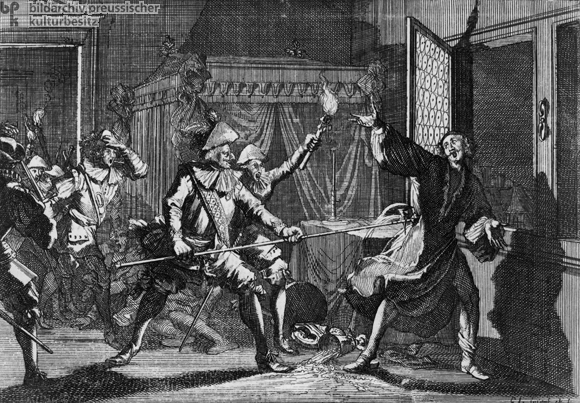













INTRODUCTION | DOCUMENTS | IMAGES | MAPS | EDITOR
|
Having fallen out of favor with the Emperor, Wallenstein was deposed as Supreme Commander in January 1634. Unbeknownst to him, a secret court then found him guilty of treason on account of his unauthorized attempts to broker a peace during the Thirty Years War. He retreated to the Bohemian city of Eger and hoped for the timely arrival of Swedish troops. By the time he realized the danger he was in, it was already too late: on the night of February 25, 1634, he and four of his closest allies were murdered by officers loyal to the Emperor. In the 18th century, poet and playwright Friedrich Schiller immortalized Wallenstein in the dramatic trilogy that bears his name (completed in 1799). Copperplate engraving by Caspar Luyken (1672-1708), c. 1634.
© Bildarchiv Preußischer Kulturbesitz |
 print version
print version return to image list
return to image list previous image
previous image
